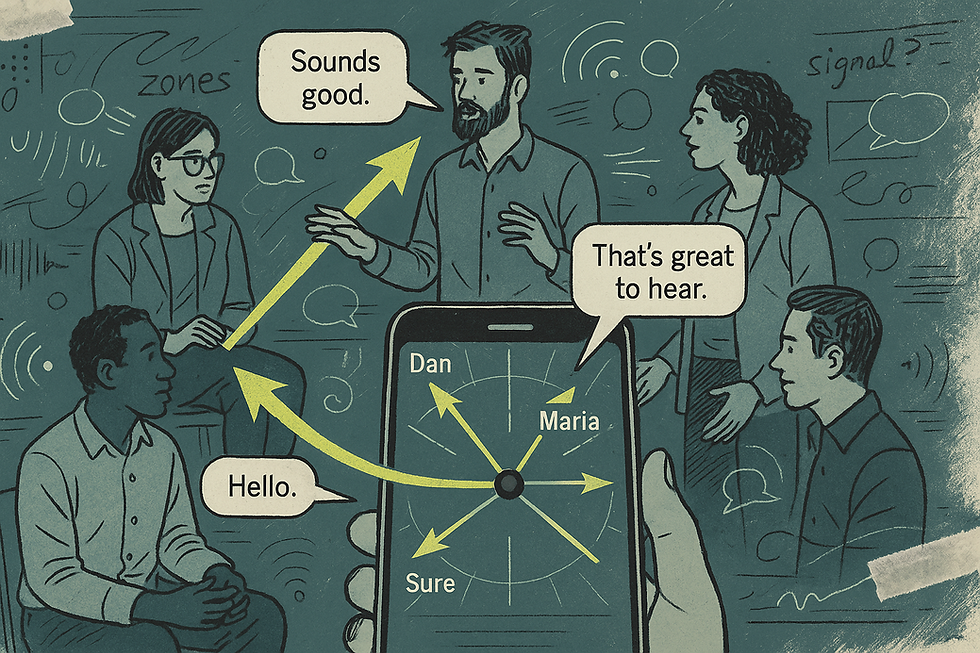ChatGPT knows more about you than you think
- Emily Neuhoff
- 2 days ago
- 3 min read
When you’ve posted something public—even years ago—it may now live forever inside ChatGPT’s memory, rented out to any curious stranger or prompt engineer.

1. How ChatGPT indexes your personal information
OpenAI’s GPT models are trained on vast amounts of publicly available internet text—this includes social posts, news articles, blog comments, and even government records. While OpenAI has stated that it does not intentionally collect personal data or build individual profiles, the reality is that incidental personal information gets baked into the training set.
Class-action lawsuits allege that OpenAI processed billions of words that may have identified millions of U.S. individuals without consent. Researchers at Google have shown how adversarial “jailbreak” prompts can coax ChatGPT into revealing names, phone numbers, emails—and more than 10,000 unique training-text fragments. Notably, about 16.9% of those fragments reportedly contained personally identifiable information (PII).
2. Real-world visibility: Zoning your content for the wrong users
In July 2025, OpenAI launched a “Make this link discoverable” feature that allowed users to share specific ChatGPT threads. Almost immediately, Google began indexing many of them—including sensitive content involving criminal confessions, health issues, and corporate trade secrets. What felt like a private AI conversation became suddenly searchable. OpenAI quickly canceled the feature and began efforts to remove indexed pages.
Meanwhile, cybersecurity firm Harmonic Security found that 4.4% of prompts and 22% of uploaded files submitted to generative AI tools contained sensitive corporate or personal data. Shockingly, 25% of those cases originated from free ChatGPT accounts. In 2024, Italy’s data protection regulator fined OpenAI €15 million for unlawful data processing, lack of transparency, and inadequate legal basis—an ongoing legal concern under GDPR.
3. Why this matters—for you and your brand
Risk | Why it matters |
Reputation exposure | Old digital details—political stances, medical info—may be surfaced or aggregated. Once public, they’re hard to retract. |
Defamation & hallucination | AI output can fabricate inaccuracies about real people, distorting public perception. |
Privacy regulatory risk | Under GDPR and U.S. laws like CCPA, scraped or re-used data may trigger legal consequences—especially when believed to be private. |
Data leakage | Employees using ChatGPT without proper controls may accidentally expose IP, customer data, or strategic plans. Axios reports nearly half of AI-driven data leaks occurred via standard accounts. |
4. What you can do—Data hygiene in the AI age
For Individuals:
Audit your public footprint. Use search queries like site:yourname.com to uncover old blogs, forum posts, and comments. Submit takedown requests where necessary.
Use chat history sparingly. Disable ChatGPT memory features if you don’t want your interactions logged. Consider using VPNs or alias accounts.
Leverage your “right to be forgotten” under GDPR, CCPA, or similar laws to request deletion of scraped or outdated personal data.
Avoid publicly sharing ChatGPT threads that contain identifiable or sensitive content.
For Enterprises and Brand Owners:
Implement AI use policies. Prohibit staff from sharing PII, financial data, or code through public/free AI tools. Profile prompts through secure, enterprise-grade environments.
Train teams on “prompt hygiene.” Encourage de-identified datasets, fragmented prompt structures, and minimal use of client names or specifics.
Adopt privacy-by-design practices when building with AI. Incorporate data minimization, audit trails, clear purpose definition, and opt-in mechanisms.
Review your legal exposure. If you are publishing ChatGPT outputs, confirm they don’t contain third-party PII or hallucinated data. Treat these outputs as potentially regulated content.
5. Big-picture thinking: Beyond “AI is cool”
In the natural world, decay is expected. But in the digital era, technology refuses to forget. ChatGPT is not just a mirror of the web—it is an archive of human traces, reconstructed and reinterpreted by AI prompts.
What used to be a low-stakes privacy concern—indexed blog posts or forgotten tweets—is now integral to how AI generates, shares, and defines content. The casual standards of early web publishing no longer hold up in an era where large language models can resurface anything.
We may not be able to opt people into training datasets after the fact, but we can shape what they ask of AI—and how they use the responses. As generative AI becomes a permanent fixture in our workflows and content creation, it’s not just policy that matters—it’s culture. Ethics. Dignity.
Final Meta Takeaway
“We didn’t design our ad‑partner to go live on your brain,” said Sam Altman—acknowledging that ChatGPT lacks the same privacy protections we expect from doctors, therapists, or lawyers.
Just because we can index information doesn’t mean we should.
Start building a dignity-first future for AI. Reclaim your digital DNA. Protect the story that still belongs to you.
Looking ahead
If this resonates, let’s connect. I help businesses re-audit their brand presence—anchored in real human stories, not scraped digital residue.
_edited.png)




Komentarze